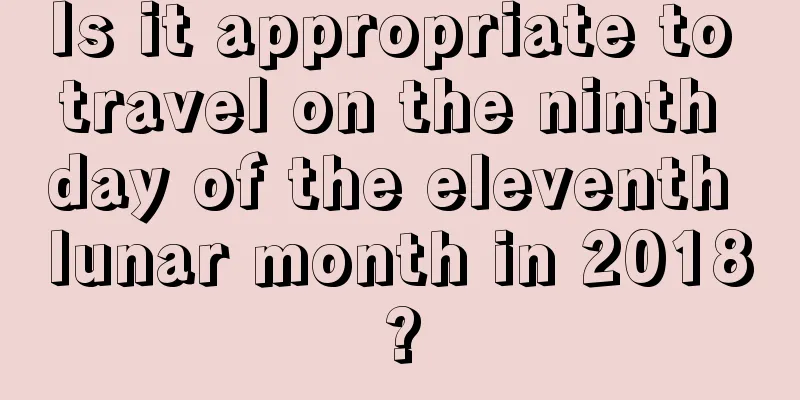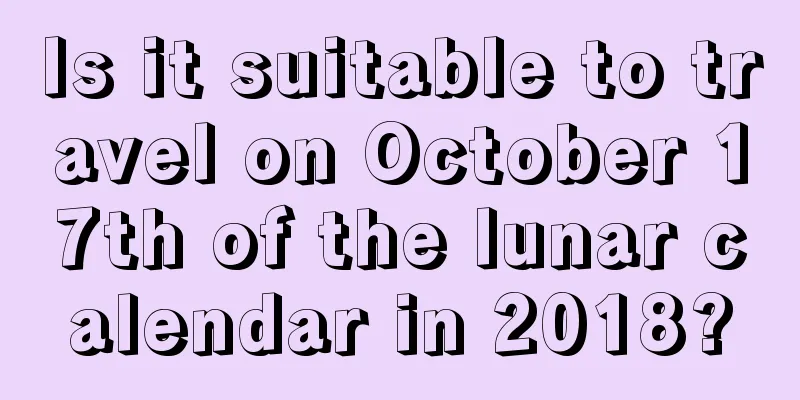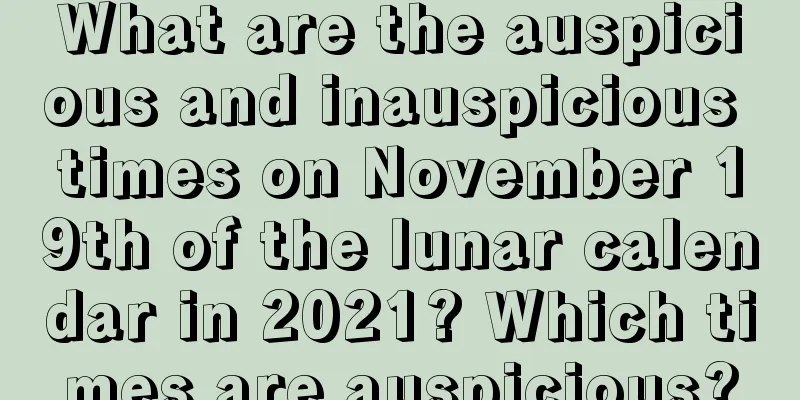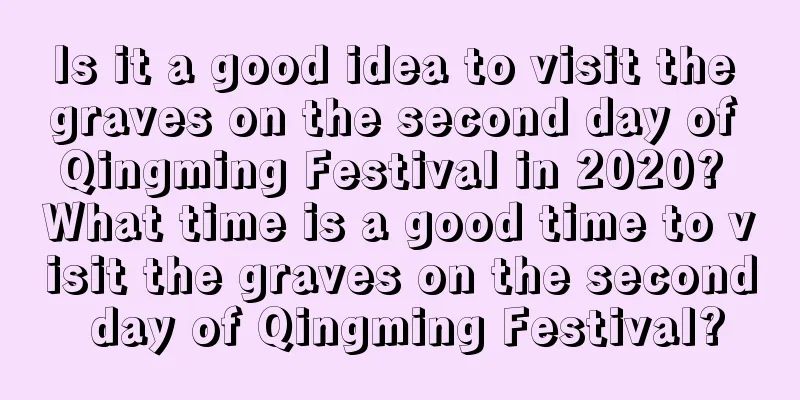What is the lunar calendar date for Mid-Autumn Festival in 2017? What should we pay attention to during the Mid-Autumn Festival?
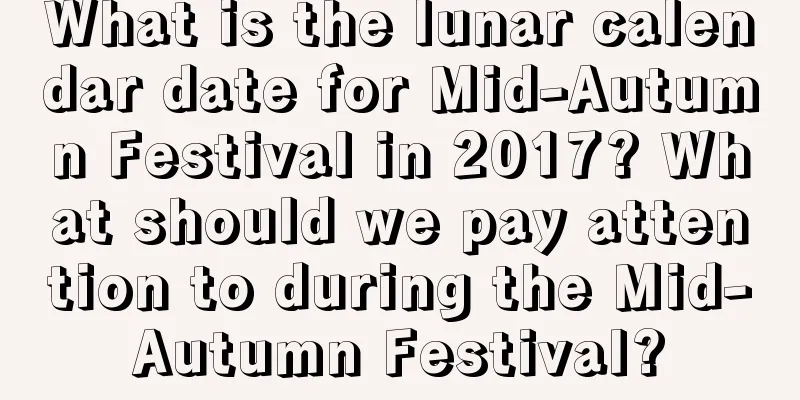
Introduction: Every day is a new beginning, but every day has its own good and bad fortune. So, is the lunar calendar date for Mid-Autumn Festival in 2017 good? What should we pay attention to during the Mid-Autumn Festival? The Mid-Autumn Festival is one of the important traditional festivals in our country. The Fortune Teller website has compiled a special article about the Mid-Autumn Festival for everyone. Let’s learn about it together!What is the lunar calendar date for Mid-Autumn Festival in 2017?[Auspicious day] Mid-Autumn Festival (October 4) on the 15th day of the eighth lunar month in 2017 Gregorian calendar: Wednesday, October 4, 2017 Libra Lunar calendar: August 15, 2017 (big month) Zodiac sign Rooster Conflict: Conflict with Horse (Wuwu) Conflict with SouthWhat should we pay attention to during the Mid-Autumn Festival in 2017?[Today’s Old Almanac is auspicious] Marry, build, travel, settle lawsuits, offer sacrifices, pray for blessings, seek heirs, resolve migration, bury, collect wealth, erect pillars, raise beams, accept livestock, fast and offer sacrifices, settle lawsuits, open business, build houses, move into homes, govern the country [Today’s Old Almanac is auspicious] Plant, dig canals, release water, seek medical treatment, take up a post, build meridians and embankmentsWhat are the traditional customs of Mid-Autumn Festival?1. Offering sacrifices to the moon, appreciating the moon, and worshipping the moon . The "Book of Rites" had long recorded "Autumn Evening Moon", which means worshipping the moon god. At this time, people would hold festivals to welcome the cold and offer sacrifices to the moon, and set up incense tables. In the Zhou Dynasty, the Mid-Autumn Festival was celebrated every year with the welcoming of the cold and the worship of the moon. A large incense table is set up, and offerings such as moon cakes, watermelons, apples, red dates, plums, grapes, etc. are placed on it. Moon cakes and watermelons are absolutely indispensable, and the watermelon must be cut into a lotus shape. The custom of appreciating the moon on Mid-Autumn Festival was very popular in the Tang Dynasty, and many famous poems by poets contain verses about the moon. By the Song Dynasty, the custom of appreciating the moon on Mid-Autumn Festival became more popular. On this day, "the rich families decorated their pavilions and terraces, while the common people vied to occupy restaurants to enjoy the moon." During the Ming and Qing dynasties, moon-worship and moon-appreciation activities among the court and the public were even more large-scale, and many ancient monuments such as "Moon-Worship Altars", "Moon-Worship Pavilions" and "Moon-Viewing Towers" still remain throughout China. 2. Watching the tide In ancient times, in addition to moon-watching during the Mid-Autumn Festival, watching the tide was another major Mid-Autumn Festival event in Zhejiang. The custom of watching the tide during the Mid-Autumn Festival has a long history. As early as the Han Dynasty, there was a very detailed description of it in Mei Cheng's "Seven Hairs". After the Han Dynasty, the custom of watching the tide during the Mid-Autumn Festival became more popular. There are also records of watching the tide in Zhu Tinghuan's "Supplement to Wulin Old Stories" in the Ming Dynasty and Wu Zimu's "Dreams of the Southern Song Dynasty" in the Song Dynasty. Nowadays, the Qiantang River tide attracts a large number of tourists every year to experience the thrill of life and death. 3. Light lanterns On the night of the Mid-Autumn Festival, there is a custom of lighting lanterns to enhance the moonlight. Nowadays, people in the Huguang area still have the custom of stacking tiles into a tower and lighting lanterns on the tower. In the Jiangnan area, there is a festival custom of making lantern boats. In modern times, the custom of lighting lanterns during the Mid-Autumn Festival has become more popular. 4. Guessing riddles: On the full moon night of the Mid-Autumn Festival, many lanterns are hung in public places. People gather together to guess the riddles written on the lanterns. As it is a favorite activity for most young men and women, and love stories are also spread during these activities, guessing riddles during the Mid-Autumn Festival has also evolved into a form of love between men and women. 5. Eating mooncakes . Moon-watching and moon-eating are essential customs for celebrating the Mid-Autumn Festival in all parts of China. As the saying goes, "The moon is full on the 15th day of August, and the Mid-Autumn mooncakes are fragrant and sweet." There is also a custom of Bo Bian in Xiamen, Fujian, and Bo Bian has been listed as a national intangible cultural heritage project. 6. Appreciating osmanthus flowers and drinking osmanthus wine People often eat moon cakes and appreciate osmanthus flowers during the Mid-Autumn Festival, and eat various foods made with osmanthus, with pastries and candies being the most common. 7. Playing with Lanterns There is no large-scale lantern festival during the Mid-Autumn Festival like the Lantern Festival. Playing with lanterns is mainly done among families and children. As early as in the Northern Song Dynasty's "Wulin Jiushi", there was a record of the Mid-Autumn Festival customs, which included putting a "little red" lantern into the river to drift and play. Playing with lanterns during the Mid-Autumn Festival is mostly concentrated in the south. For example, at the Foshan Autumn Color Fair, there are all kinds of colorful lanterns: sesame lanterns, eggshell lanterns, wood shavings lanterns, straw lanterns, fish scale lanterns, husk lanterns, melon seed lanterns, as well as bird, animal, flower and tree lanterns. 8. Burning the Tower: The game of burning tile lamps (also known as burning flower towers, burning tile towers, and burning foreign towers) is widely spread in the south. According to folklore, the tower was built to commemorate the heroic battle of Liu Yongfu, a famous anti-French general in the Qing Dynasty, who burned to death the French invaders who fled into the tower. There is also a "burning tower" activity in Jinjiang, Fujian. Legend has it that this custom is related to the heroic act of resisting the Yuan soldiers. After the establishment of the Yuan Dynasty, the Han people were ruled bloodily, so the Han people launched an unyielding resistance. Various places agreed to start an uprising on the Mid-Autumn Festival and lit a fire on the top floor of the pagoda as a signal. Similar to the uprising of setting fire to Fenghuotai, although this resistance was suppressed, the custom of burning pagodas remained.Summary: Through the above article, we know about the auspiciousness and inauspiciousness of the Mid-Autumn Festival in 2017 and the customs analysis. I hope it can help everyone! |
<<: Is the Mid-Autumn Festival on August 15, 2017 a good day? Can I go to the temple to pray?
Recommend
Is it a good time to visit graves and worship ancestors during the Winter Solstice in 2017? Can visiting graves during the winter solstice be advanced or postponed?
Introduction: Winter Solstice is an important trad...
A detailed introduction to the positions of the God of Wealth and the God of Happiness on the fifth day of the first lunar month in 2022
The positions of the God of Wealth and the God of ...
Can I get married on Valentine's Day in 2017? Is it a good idea to get married on Valentine's Day?
Introduction: Valentine's Day is a festival fo...
Auspicious days for house cleaning in January 2019, list of auspicious days in the twelfth lunar month
Sweeping the house in the twelfth lunar month is a...
Introduction to the Grain Full Solar Term and the Origin of the Grain Full Solar Term
The meanings and origins of different solar terms ...
Is the 26th day of the seventh lunar month in 2019 suitable for funerals? Is today an auspicious day for funerals?
Introduction: Funerals usually require an auspicio...
Is it a good idea to move house on the 14th day of the first lunar month in 2019? Can I move to a new house?
For more details about the 2019 New Year and the ...
What are the taboos and do’s and don’ts that we should pay attention to during the Rain Water solar term in 2019?
After the Rain Water solar term, spring returns to...
Is it a good idea to pick up the car on September 21st of the lunar calendar in 2017?
September is in late autumn, and every day in Sep...
Is the Lantern Festival on the 15th day of the first lunar month in 2021 a good day for engagement? Precautions
New Year, new atmosphere. Many couples will enter ...
What are the do's and don'ts on December 24, 2017 in the lunar calendar?
The weather is covered in snow, but the cold clim...
Is it a good idea to get married on the third day of the seventh lunar month in 2018?
In the seventh month of the lunar calendar, summe...
What are the do's and don'ts on May 26th of the lunar calendar in 2017? What are the taboos on bad days?
The fifth month of the lunar calendar is the firs...
Is it a good idea to move into new house on the Rain Water solar term in 2020? What should I pay attention to on moving day?
Speaking of the time to move into new house, I bel...
Is it a good idea to move into a new house on July 25, 2020 in the lunar calendar?
Is it a good idea to move into a new house on Jul...

